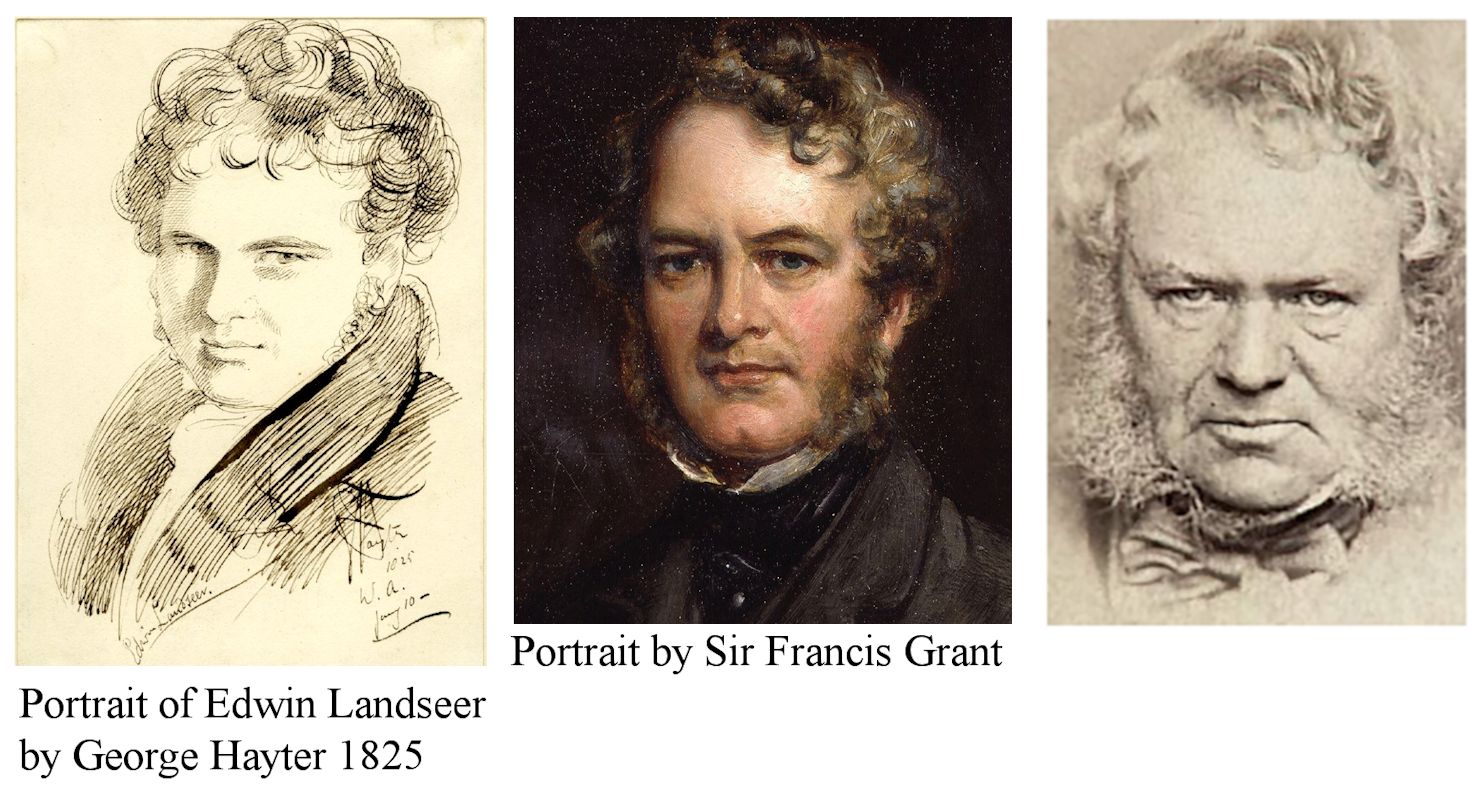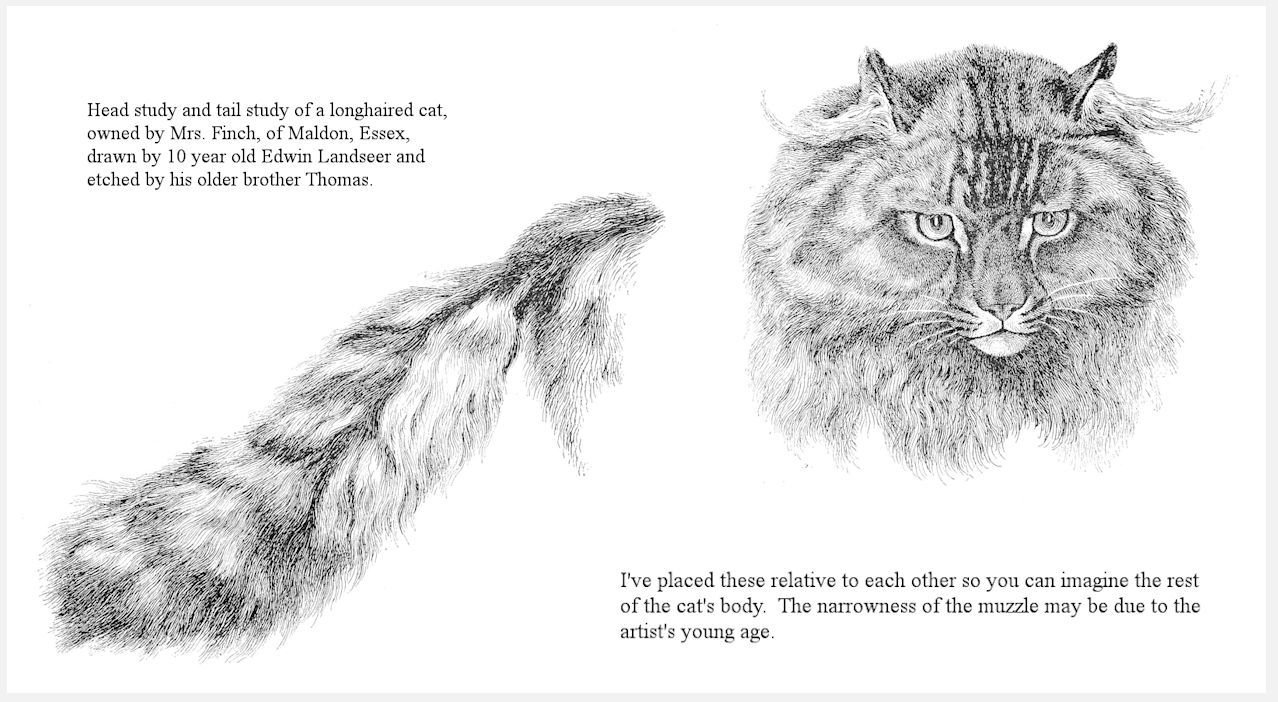
LANDSEER'S LONGHAIRED CAT
An exploration of Sir Edwin Landseer’s drawing of a longhaired cat and why it is sometimes mis-identified as a Russian Longhair.

Landseer
The English painter, Sir Edwin Henry Landseer (1802 –1873), is best known for his paintings of horses, dogs and stags, and for the lion sculptures in London’s Trafalgar Square. He was born in London and was one of seven surviving children (out of fourteen) of the engraver John Landseer. Edwin was a child prodigy. In 1812, at the age of ten, he produced the exquisite drawing of a longhaired cat he saw at Maldon. Three years later, he exhibited works at the Royal Academy.
In his late 30s, he had a serious nervous breakdown, and for the rest of his life he suffered from bouts of depression (melancholy), hypochondria, alcoholism and drug use. In the last few years of his life he became mentally unstable and was eventually declared insane in 1872, fifteen months before his death.
Much of his fame - and income - was generated by the publication of engravings of his work, many of them etched by his older brother Thomas. The longhaired cat was one of these. It is titled "T. Landseer filuis sculp from a Drawing by his brother Edwin" and the publication line reads "Published by B & R Crosby & Co. Sepr. 1813.”
Landseer’s Longhaired Cat
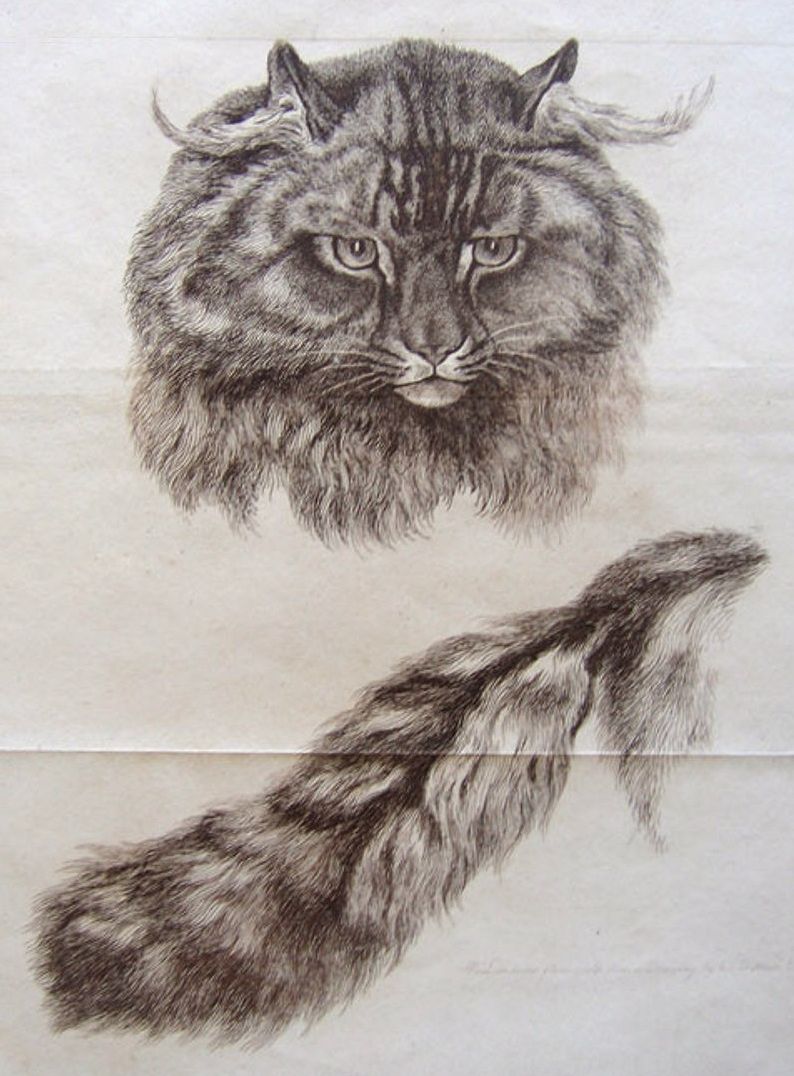
From a young age, Edwin used to visit friends, Mr and Mrs W. W. Simpson at Beeleigh Grange, near Maldon, Essex, for holidays. This is recorded in “George Hayter and Edwin Landseer, by A Voyager” in The Sporting Review of July 1843. “There are such places in British topography as Maldon and Beeleigh, and they may be known to some of your readers as being in Essex, [they] are not ill-suited to the nursing place of a painter — and they were such to Edwin Landseer. He spent both his boyhood and his youth there, [. . .] Many of those early sketches are still preserved, and are now duly valued.”
While at Beeleigh, Landseer produced his drawing of the head and tail of a longhaired cat. Harrison Weir included the drawing of the head in his chapter on Russian Longhairs (which digresses into miscellaneous longhairs), but his description does not call it a Russian Longhair. Weir wrote:
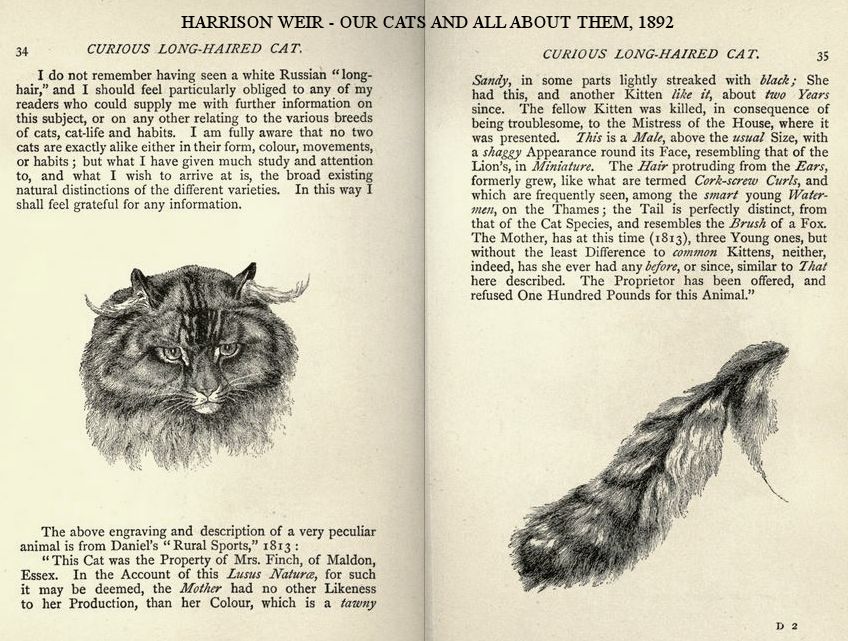
“The above engraving and description of a very peculiar animal is from Daniel's ‘Rural Sports,’ 1813:
‘This Cat was the Property of Mrs. Finch, of Maldon, Essex. In the Account of this Lusus Naturae, for such it may be deemed, the Mother had no other Likeness to her Production, than her Colour, which is a tawny Sandy, in some parts lightly streaked with black; She had this, and another Kitten like it, about two Years since. The fellow Kitten was killed, in consequence of being troublesome, to the Mistress of the House, where it was presented. This is a Male, above the usual Size, with a shaggy Appearance round its Face, resembling that of the Lion's, in Miniature. The Hair protruding from the Ears, formerly grew, like what are termed Cork-screw Curls, and which are frequently seen, among the smart young Watermen, on the Thames; the Tail is perfectly distinct, from that of the Cat Species, and resembles the Brush of a Fox. The Mother, has at this time (1813), three Young ones, but without the least Difference to common Kittens, neither, indeed, has she ever had any before, or since, similar to That here described. The Proprietor has been offered, and refused One Hundred Pounds for this Animal.’
This was either a cross with the English wild cat, which sometimes has a mane, or it was an accidental variation of nature. I once bred a long-haired rabbit in a similar way, but at first I failed entirely to perpetuate the peculiarity. I think the above simply "a sport."
In that chapter, Weir mentioned cross-bred longhaired cats and this comment on shorthaired rabbits spontaneously producing longhaired litters: “I have known this with rabbits, who, after breeding short-haired varieties for some time, suddenly reverted to a litter of "long-hairs"; but have not carried out the experiment with cats.”
1812 pre-dates the organised cat fancy, but longhaired cats would have been brought back by travellers and ship’s captains, either as curiosities or as working cats. So it’s not unusual that such a “sport” would have been found in the region of a cargo port.
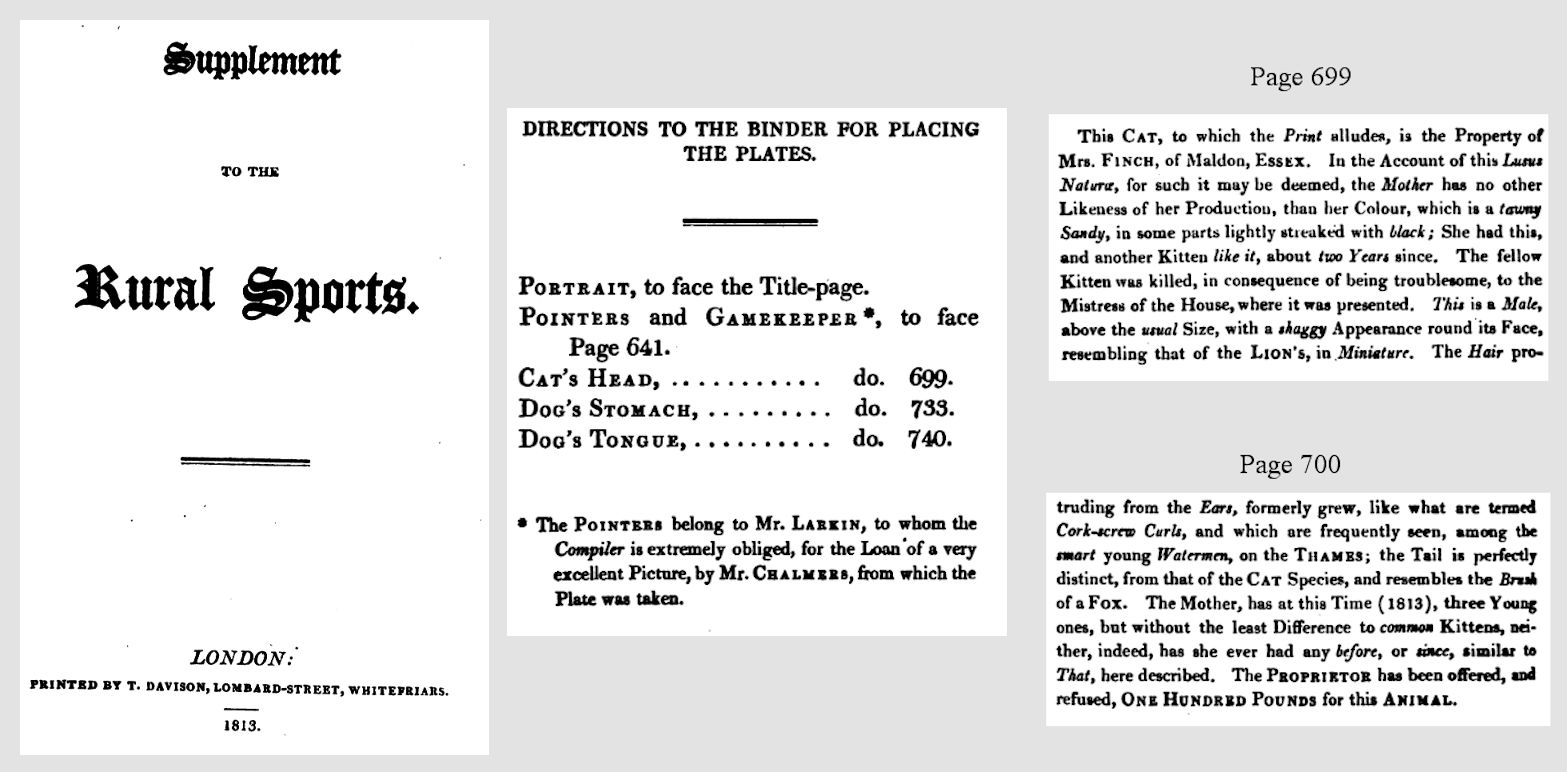
The Russian Longhair Misconception
We will never know the true ancestry of Landseer’s longhair because its ancestors could have reached Maldon from many trading ports. But it is not a “Russian Longhair,” nor an Angora. That is a recent misconception based on the reproduction of the image in Weir’s “Our Cats,” particularly the online versions of the book where the image file takes the name of the chapter heading.
Maldon, on the Blackwater Estuary, was an important river-port and a canal opened in 1797 linked it to Chelmsford. Thames sailing barges transported cargo to Maldon from the north, from the south coast, and also from continental Europe, and also took cargo to London. Longhaired cats, or shorthaired cats carrying the recessive longhair gene, could easily have arrived on these barges, either directly from the continent, or via the busy port of London with its international shipping links.
Essex has many links to the original American colonies as can be seen from place names in Massachusetts (e.g. Braintree, Chelmsford, Billerica (Billericay) and Malden). Many migrants from Essex would initially have set off from Maldon, this being their nearest port, and it’s likely that people and goods also travelled back to Maldon in later years. So it is even possible that Landseer’s longhair had its origins in Maine or Massachusetts, in cats that later became known as Maine Coons.
